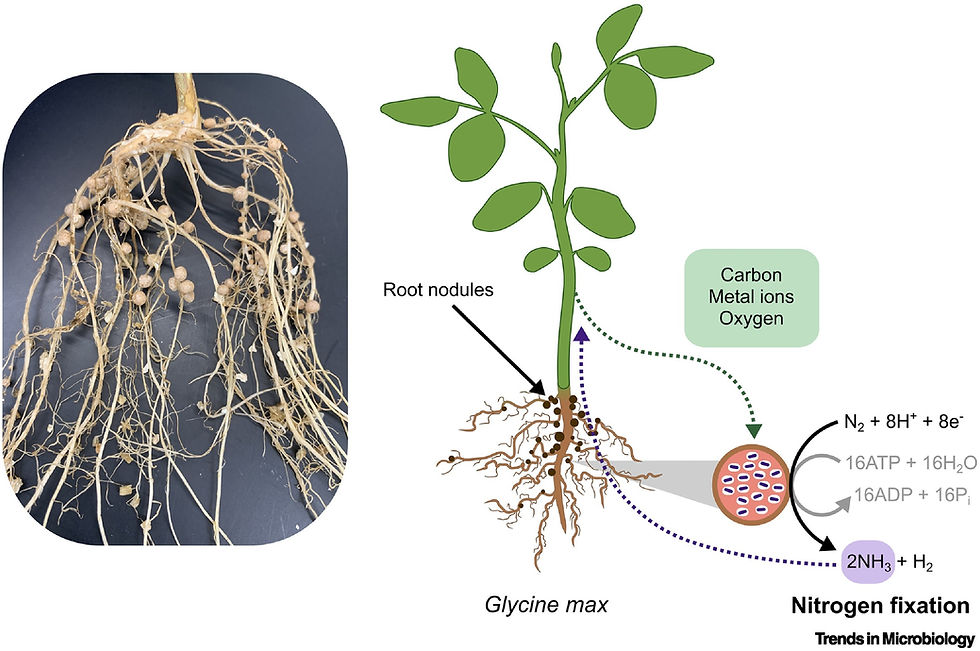How beneficial bacteria help legumes fix nitrogen into the soil
- Miguel M.LS.

- May 9, 2021
- 2 min read
Updated: Dec 13, 2021
Ever wondered why every organic gardener tells you that you should plant leguminous plants in association with others? Or that you should include them in your crop-rotation scheme? Or that they’re just plain cool? Well, wonder no more. Here we’ll explore the key aspect that makes legumes desirable for the gardener, beyond their individual benefits as food or ornamentation. We’re talking about the nitrogen-fixating capability of these plants, which results in a capability for improving the soil fertility by growing in it and, consequently, in a lot of fields around the world that look like this:

Look at all that white clover!
The first and most important thing to understand about all of this is that legumes themselves do not actually fixate nitrogen into the soil. What they do is offer a certain group of bacteria a space to live within their roots, thus creating a symbiotic relationship with them. While the plants are alive, thus, they get the advantage of having something akin to a nitrogen-production system (really a nitrogen-fixation system) in their roots, which allows them to outgrow the competition, and after they die all of this nitrogen that they had accumulated goes back into the soil in ways that other plants can use.
The nitrogen that these bacteria (called diazotroph bacteria) take and make available for other plants is mostly nitrogen that is present in the form of gas in the atmosphere. Plants can’t use nitrogen directly like this, so they take advantage of the compounds that the bacteria make as a result of their own feedings off this gaseous nitrogen, like ammonia and nitrate. What legumes simply do is make nodules in their roots, which look from the outside like weird growth but are actually similar to beehives for these nitrogen-fixing bacteria. And that’s mostly how legumes are associated with them, and in turn, serve to fix nitrogen into the soil after they die, and why when you uproot your bean plants their roots look like this:

Those weird-looking warts are the nodules!
We say ‘mostly, of course, because there’s really quite a bit more of science going into this. If you are interested in reading about the process in-depth, take a look at this interesting article here, by a team of researchers from the Max Planck Institute of Marine Microbiology of Bremen, in Germany. Happy growing!



Comments